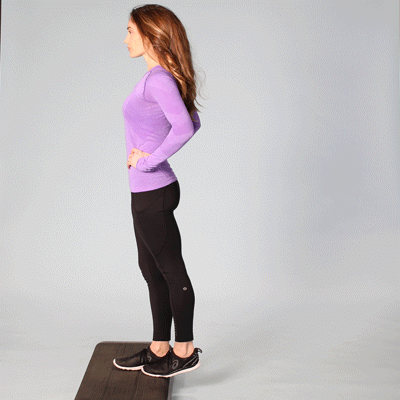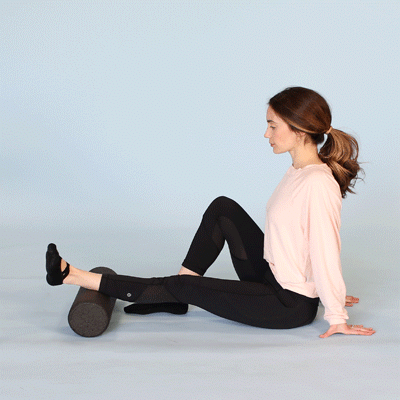While consistently working out can be great for your physical and mental health, pain (whether from injury or soreness) is often an expected part of the process. And shin splints are one of the more common workout injuries.
The term “shin splints” refers to the pain you get along your tibia (shinbone) when you’ve increased the intensity of your workout or changed up your training routine. They most often pop up among runners, dancers, and other athletes.
How shin splints happen
When the muscles and bones in the lower part of your leg start to pull and tug, your shin can become inflamed. The pain will come from continued stress on your shinbone, muscles, and connective tissues.
For some people, shin splint pain occurs during physical activity and goes away afterward. For others, the pain can be constant.
While shin splints can be a major pain in the ass (er, the shins), there are ways to avoid them and to treat the pain if you do experience it.

Stretching — namely lower-leg stretching — is a key preventive measure to stave off shin splints. Below are six stretches you can do before and after physical activity to help fight off shin splint pain.
1. Soleus step stretch
- Stand on a step with both feet.
- Bring the heel of your left foot off the edge of the step.
- Bend right knee slightly and let your left heel drop down. (You should feel this stretch in your left calf.)
- Hold this position for 20 seconds before switching to the other side.
2. Sitting band-assisted calf stretch
For this stretch, you’ll need a belt or strap.
- Sit on the floor with legs out in front of you.
- Loop the strap around one foot, just below your toes (or just below the toe of your shoe if you’re wearing sneakers).
- Relax your ankle and slowly pull the strap toward you.
- Hold for 20–30 seconds before switching to the other side. (You can also do both feet at once.)
3. Standing calf stretch
- Place your hands on a wall or a chair.
- Step one foot forward. (You’ll be focusing on the back foot for this stretch.)
- Keep back leg straight and slightly bend front leg.
- Make sure to keep back heel on the floor to really feel the stretch.
- Hold for 20–30 seconds before switching to the other side.
Note: If you’re doing this against a chair, make sure it’s in a secure position, so it won’t slide away from you.
4. Box calf raise
- Place a sturdy box or secure step stool flush against the wall. (You can also do this on the first step of a staircase.)
- Stand on the box, letting both heels hang off the edge.
- Drop your weight, bringing heels toward the floor and toes toward the sky.
- Raise yourself up on your tippy-toes so your calves are flexed.
- Slowly let your weight drop back down (step 3) so your calves are stretched again.
- Repeat for 10–12 reps.
Note: If this is too easy, you can try doing a single-leg box calf raise. (But maybe hold onto something so you won’t lose your balance.)
5. Ankle circles
- Sit on the floor with one or both legs stretched out in front of you.
- Place a rolled-up towel or small foam roller under your ankle(s).
- Roll your ankle(s) slowly, clockwise and counterclockwise.
- Do this for 20–30 seconds on each side.
6. Banded ankle flexion
For this stretch, you’ll need a flexible resistance band that you can wrap around your foot.
- Wrap the band around the top of your foot and anchor it to a fixed point in front of you.
- Start with your toes flexed up and heel pointed away from you. The band should feel taut against your foot.
- Bring heel toward you and point toes, slightly giving slack to the band.
- Repeat 15–20 times before switching to the other foot.
If you still get shin splints even after stretching, don’t worry — all is not lost. The best way to manage the pain is RICE: rest, ice, compression, and elevation.
Take a break from high impact exercise. If you want to stay active, try something low impact like swimming. Use ice and compression to help ease the pain, and try to keep your shins elevated.
When you feel up to returning to your normal activities, make sure you’re wearing appropriate athletic shoes that fit you well. And make sure to replace your shoes often!
Shin splints can seriously hurt, so your best bet is to make sure you’re properly stretching before and after exercise. Developing a consistent stretching routine can go a long way toward keeping you on track and preventing injury.







